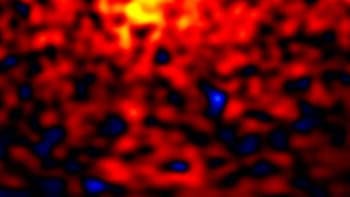
By Hamish Johnston
If there is one thing our readers like it’s a good story about fundamental constants – and the fine structure constant (α) is always a favourite.
In case you are not familiar with α, it’s a dimensionless quantity (about 1/137) that measures the strength of the electromagnetic interaction. As such, it quantifies how electrons bind within atoms and molecules and therefore can be measured to great precision using spectroscopic techniques. And because atoms can be found just about anywhere between here and the edge of the universe, it’s possible to ask whether α is the same everywhere.
In a paper published this week in Physical Review Letters, an international team of physicists have measured α in the atmosphere of a white-dwarf star – where the gravitational potential is about 30,000 times greater than here on Earth.
Julian Berengut at colleagues at the University of New South Wales and universities in the UK and US looked at absorption lines from iron and nickel on G191-B2B, which is a white dwarf about 150 light-years from Earth. The spectra – which were taken by the imaging spectrograph on the Hubble Space Telescope – were compared to similar measurements on iron and nickel made in a lab on Earth.
Some theories that look beyond the Standard Model of particle physics and general relativity predict the existence of hitherto undetected scalar fields. Such fields could affect the values of fundamental constants including α. Detecting such discrepancies could lead to a major breakthrough in our understanding of particle physics and cosmology.
Unfortunately, that’s not what happened! Berengut’s team found that to within about one part in 20,000, α is the same in both places. An interesting thing about the result is that it is limited by the precision of the measurements made here on Earth, rather than those made by Hubble. Indeed, the team say they could improve their results by up to a factor of 100 with better lab experiments.
Berengut is a member of a team in New South Wales that is famous for discovering the “Australian dipole” – evidence that 10 billion years ago, α was slightly larger near quasars in the southern sky than it was near quasars in the northern sky.
For more about this remarkable observation see this news story, this blog post and this feature article.



